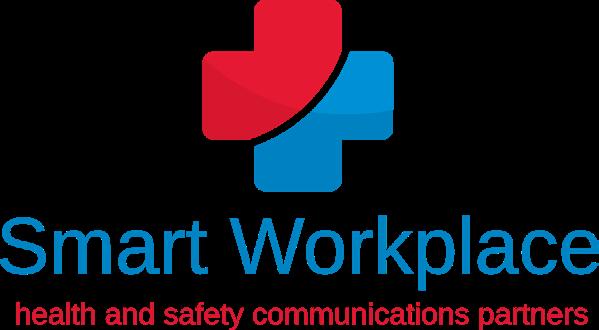ZoneWellness
Become a priority in your life


Become a priority in your life

Family estrangement—when communication and connection break down between relatives—can be one of the most painful and complex emotional experiences. Whether the separation stems from conflict, trauma, or gradual disconnection, the grief and confusion it brings are real and valid.
Estrangement can feel like a living loss. According to the Mental Health Commission of Canada, social isolation and emotional distress— common outcomes of estrangement— can lead to poor health and chronic loneliness.
Estrangement can be temporary or long-lasting, and its impact varies depending on the context and the individual’s coping mechanisms.
According to Psychology Today, the most common reasons for estrangement include unmet expectations, boundaries that are repeatedly crossed, mental health problems, in-laws, divorce, and financial differences.
When you are estranged, it can feel like an open wound that never heals. It’s a chronic stressor. Coping with estrangement can be deeply challenging, but healing is possible with time, support, and selfcompassion.

Here are some strategies that can help:
1. Acknowledge your feelings. Estrangement often brings a mix of emotions—grief, anger, guilt, relief, or confusion. Allow yourself to feel them without judgment.
2. Understand the reasons. Reflect on what led to the estrangement. Was it mutual, one-sided, sudden, or gradual? Understanding the context can help you make peace with it or decide if reconciliation is possible.
3. Set healthy boundaries. If the estrangement was due to toxic or
harmful behaviour, maintaining distance might be necessary for your well-being. Boundaries protect your mental and emotional health.
4. Seek support. You don’t have to go through it alone. Connect with friends or support groups.
5. Consider reconciliation (If safe and desired). Sometimes, reconciliation is possible with time, communication, and mutual effort. If you’re open to it, start with a letter or message expressing your feelings calmly. Be prepared for any outcome—positive or not.
• Communication is key
• Give NEAT a try
• Boost your self-confidence
• Practicing calm control
• Ensuring content is trustworthy
• Handling new parent stress
• Dealing with fluorescents
• Coping with losing a pet
• Make time for each other
• Food allergy control
• Energy Zone - Food for good bones


If you’re looking for relationship advice, this is probably the quote you’ve heard the most: communication is key. And it’s true!
Bottling things up and never talking about them blocks any attempts at understanding, reconciliation, or emotional compatibility. When you’re in a relationship, it’s a good idea to talk about the things that are on your mind - both good and bad - so you can process your thoughts and feelings together, as a team. If you’re struggling or feel like you need extra support, work on communicating that to your partner. It doesn’t have to be a dreaded “we need to talk” conversation - there are fewer intimidating ways to approach the subject.

Publisher & CEO: Stefan Dreesen
Editor: Kate Van Hoof-Peeren
H&S Communication Specialists: Alan Haycroft, Liz Slobodin, Kevin Harvey
But the key point is to take it in turns, to properly listen to one another, and not jump into the role of “prosecutor vs defence”. There are a lot of nuances that goes into open, honest communication, so make sure you’re both in the right head space to have a discussion. It’s not advisable to suddenly spring an issue on your spouse unless it’s an urgent matter. Likewise, don’t take too long. It’s important to have time to gather your thoughts and approach a serious conversation carefully but warning your partner in the morning that there’s something you need to talk about and then waiting until the evening to do so means you both spend the whole day worrying.
TOLL FREE: 1-888-655-4800
Mailing Address: 2010 Winston Park Drive, Suite 200, Oakville, ON L6H 5R7 www.smartworkplace.ca | info@smartworkplace.ca
The information presented in Wellness Zone has been compiled from sources believed to be reliable. However, it cannot be assumed that all acceptable measures are contained in this article nor that additional measures may not be required under particular or exceptional circumstances, or your own company procedures, or by federal, state/ provincial and local law.
Application of this information to a specific worksite should be reviewed by a wellness professional. Anyone making use of the information set forth herein does so at his/her own risk and assumes any and all liability arising therefrom. Specific medical advice should be obtained through consultation with a physician or other trained health care practitioner. Wellness Zone is published monthly by Smart Workplace Inc. www.smartworkplace.ca. All rights reserved. © 2025. No part of this publication is to be copied without permission from the publisher.
Have you ever noticed that some people seem to stay lean without constantly hitting the gym or counting every calorie? The secret often lies in something called non-exercise activity thermogenesis, or NEAT. This is all the energy you burn through daily activities that aren’t structured exercise, like walking to your car, fidgeting, standing while talking, cleaning your house, or even laughing.
In a modern world where sitting has become our default mode, boosting NEAT may be one of the most overlooked tools to maintain a healthy weight.
The calories burned through NEAT can make it easier to maintain a healthy weight without feeling like you’re constantly dieting or working out. Higher NEAT levels are also linked to improved insulin sensitivity, lower inflammation, better heart health, and even reduced risk of regaining weight.
One of the most practical ways to increase non-exercise activity thermogenesis is to live more of your life on foot. It’s easy to fall into habits that keep us sitting, like driving short distances, batching chores to minimize steps, or choosing the closest parking spot. Instead, try deliberately walking further whenever you can. Park your car at the far end of the lot. Take the long route through the supermarket. Walk your dog an extra block or two.
At home, rethink how you handle daily tasks. Carry groceries into the house one bag at a time. Make multiple trips up the stairs instead of trying to haul everything in one go. Stand or pace during phone calls instead of sitting still.
Look for idle moments and turn them into opportunities. Do a few squats during television commercials, roll your shoulders while stuck in traffic, or tidy a small space while waiting on hold. The beauty of micro-movements is that they require no equipment, no planning, and barely any extra time.
When you realize that everyday life is filled with opportunities to move, you’ll start noticing countless small ways to boost your daily calorie burn. Each one is a step toward sustainable weight loss and better overall health.

If your palms get sweaty just thinking about parties or social events, you’re not alone. Social anxiety can make even the simplest conversations feel like you’re on stage, turning everyday interactions into overwhelming experiences.
But being nervous about meeting new people doesn’t define who you are. Social confidence isn’t something most people are just born with - it’s a skill you can develop, one step at a time.
Try these strategies to build stronger social skills:
Just breathe
That sudden rush of heat in your chest, the quick, shallow breathing, the urge to escape - those are all normal reactions when social anxiety kicks in. Your body’s fight-or-flight system is just misreading the situation, treating a social interaction like a real threat. You can break that cycle with a breathing technique called the 4-7-8 method: inhale for four seconds, hold it for seven, and exhale slowly for eight. This helps slow your heart rate and sends a calming signal to your nervous system.
Tune into others
When social anxiety kicks in, it’s easy to get stuck in your own head - worrying about how you look or what you’re saying. But that inward focus only feeds your anxiety and undermines your confidence.
Instead, try shifting your attention outward. Get curious about the people around you. Notice body language, expressions, and tone. Who’s laughing? Who’s making eye contact? Who seems interested in the conversation?
Break the ice strategies
Real connection starts with finding common ground - and the easiest way to get there is by paying attention to what’s around you. Look out for small conversation openers: shared experiences, something about the environment, or anything visual you can
comment on. Try something like, “Looks like we chose the same drink - do you usually go for that?” or “They always play good music here. Do you know who this is?”
This approach takes the pressure off you to be clever or impressive. You’re simply using your surroundings to start a real conversation - and with practice, talking to new people feels much more natural.
Take gradual social steps
Confidence doesn’t just show up overnightit’s something you build gradually, by taking on small, manageable challenges over time.
Start by creating your own “confidence ladder” - a list of social situations that range from easy to more nerve-racking. For example:
1. Make small talk with a barista.
2. Ask someone for directions.
3. Join a group meal with friends and a few new faces.
4. Host a dinner with people you’ve recently met.
Choose one step at a time and practice it until it feels comfortable. Then, think about what went well and how you felt. Tracking your progress builds self-belief and helps you learn from each experience.
Prepare and reflect
Planning ahead can make social situations feel more manageable. Before an event, try a short confidence ritual - listen to calming music, run through a few conversation starters, or picture a positive interaction. Having an exit plan, like leaving after an hour, can also ease some of the pressure.
Prepare for tricky moments too. Know that you can step outside for air, message a friend, or take a short break somewhere quiet. Just knowing you have options can help you stay calm.
Planning won’t remove all discomfort, but it gives you tools to manage it - and that’s a big part of building lasting social confidence.
Do stressful moments unravel your best intentions? An upsetting word, a challenging event, or even a sly glance can cause you to forgo your values. Reactivity, such as angry outbursts, jealous acts, or impulsive decisions, frequently originates from emotional baggage. Underneath the flash of emotion lies past pain, unresolved fear, or unmet needs that influence your behaviour. Left unchecked, they guide your actions automatically, often leading to regret.
But you can interrupt that cycle. Learning to press an internal pause button when emotions surge creates a moment of choice. In that space, calm replaces chaos, and, in time, self-control becomes a powerful habit.
Self-control starts with awareness. It helps to recognize that emotional storms rarely arrive unannounced. They signal their onset through sensations like tight shoulders, shallow breaths, sweating, or a clenched jaw.
These cues act like flashing lights on a dashboard. Ignoring them may lead to regretful actions but treating them as signals prompts intentional behaviour. A simple breath, a conscious shift in posture, or mentally counting to 10 provides enough time to regain control.
Emotional responses often repeat because the brain reinforces frequently used patterns. Neural pathways grow stronger with each repetition, whether helpful or harmful. You can create a new pattern and practice it to change your response.
Introducing a mental pause during stressful moments disrupts the automatic loop. At first, the pause may not happen soon enough. Realization may come only after the fact, leading to frustration or self-criticism. But even delayed awareness is part of the learning process toward calm control.
Over time, the brain recognizes triggers sooner. Repetition makes hitting pause an embedded habit that supports emotional resilience. Eventually, space for wisdom to enter opens up automatically before reacting.
To prepare for future stressors, it helps to visualize alternative responses. This pre-sets the brain with a backup plan, making it easier to choose thoughtful behaviour over an impulsive reaction. Composure, mindful word use, and conflict avoidance are key.
Each moment spent visualizing or practicing control builds internal strength. With time, the mind defaults to measured action instead of panic or aggression.
Choosing not to react instantly during a heated moment may seem minor. But this tiny shift can have massive ripple effects. Relationships improve, self-respect increases, and decisions align better with long-term goals.
True self-control is about redirection, not repression. Creating intentional pauses rewires the mind for stability, patience, and confidence. Each pause builds strength, creates space, and deepens control.

(NC) As joyful as having a new baby can be, it also has its challenges. Lack of sleep and a demanding schedule can leave you feeling worn out. One important way to help protect yourself from emotional fatigue is practicing self-care.
Here are a few top self-care tips for new parents:
1. Create a postpartum plan: It can be helpful to think about those first 3 months as the 4th trimester. Newborns sleep and feeding schedules are intense and demanding. Plan for what will best support you and your family during this time. Let friends and family know how they can best support you. Be loving, yet firm and direct with your boundaries. This can range from when you would like visitors to what type of support is most helpful (and what is not so helpful).
2. Adjust your expectations of yourself: Focus on bonding and caring for your new baby. Allow time for your family to adjust and make sure you’re getting enough rest, sleep, nutrition and recovery time. Focus on your self-care essentials and let go of expectations to have everything else done. It is not a time to worry about entertaining others or having a spotless house.
3. Stay connected: Take time for family and friends and meet other new parents with similar aged children. Schedule time to connect with family and friends and be flexible in planning social activities. This might mean asking people to come to you. Or you can have a phone or video chat date when it is hard to connect in
person. It can also be helpful to build connections with other new parents. Look for community programs and parenting groups to get out of the house and to connect with other parents.
4. Treat yourself: Do smalls things as a part of your self-care practice. In the early weeks to months, self-care might be taking a shower and brushing your teeth that day. When the baby gets older (and everyone is getting more sleep), self-care may be taking some “me” time. You could get out with friends, go to a yoga class or even do something nice for yourself at home. For example, scheduling a virtual personal training session or taking a long bath.
5. Try to get your ducks in a row: To prevent stress as a new parent, try to get health information and resources organized as soon as possible. Ask friends, family or health care providers to recommend nearby perinatal supports for your baby, yourself and your relationship/family. It is a good idea to have a list of resources handy. You can use them if you run into any medical concerns or stressors as you transition into parenthood. This may include:
* Perinatal mental health supports.
* Help with childcare or household tasks.
* Sleep consultants.
* Community support and social supports for new parents.
* Breast/bottle feeding supports.
* Recovery from labour and delivery.
Although an individual may appear knowledgeable, they may not possess the appropriate qualifications to provide advice or act in your best interests. Determining whether to trust information you read, watch, or hear requires careful evaluation.
Key considerations for assessing the credibility of information include:
• Verify sources: Confirm that websites or content creators disclose their sources and that these references originate from reputable organizations. The absence of reliable sources or reliance on questionable references should be regarded as a warning sign.
• Ensure claims are supported by research: Exercise caution if an assertion appears exaggerated or unrealistic. Be wary of “miracle cures,” unfounded conspiracy theories, or claims of exclusive knowledge. If credible evidence or peerreviewed studies cannot be found to support such statements, their accuracy is doubtful.
• Review credentials: A simple search should verify an individual’s qualifications or expertise. Those involved in controversies or who have lost relevant licenses are unlikely to be trustworthy sources, especially concerning medical information.
• Assess bias or conflicts of interest: Consider the creator’s motivations for sharing content. Financial incentives or personal promotion may influence the objectivity of their statements, particularly when endorsing products, brands, or ideologies.
• Exercise caution with AI-generated content: While artificial intelligence holds value in healthcare, many health topics require nuanced understanding beyond what current AI can provide without expert oversight. Remain sceptical, factcheck thoroughly, and consult additional resources.
Personal anecdotes of success do not guarantee the safety or efficacy of any health approach for others. It is always advisable to consult a qualified healthcare professional prior to trying new health products, supplements, medications, or making changes to diet and lifestyle.

For many families, a pet is more than just an animal—they are a beloved companion, a source of comfort, and a cherished member of the household. We feed them, talk to them, and some even like to cuddle.
When a pet passes away, especially one who has been part of the family for years, the grief can be profound and deeply personal.
Grieving the loss of a pet can feel very similar to grieving a human loved one. Pets are often with us through major life events and our most vulnerable moments, offering unconditional love and companionship. Their absence can leave a significant emotional void. It’s important to understand that:
- Your grief is valid. Don’t let anyone minimize your feelings by saying “it was just a pet.”
- Everyone grieves differently. Some may cry openly, others may feel numb or withdrawn.
- There’s no timeline for healing. Grief can come in waves, and that’s okay.
- Pet loss hurts. They provide nonjudgmental love and emotional support, and their presence is woven into our everyday lives.
Here are a few tips to help you with your grieving process:
1. Give yourself time. Cry if you need to. Talk about your pet. Write about your memories. Don’t suppress your emotions—grief needs space to be processed.
2. Create a tribute. Make a photo album, plant a tree, or write a letter to your pet. Honouring their memory can bring comfort and closure.
3. Talk to someone. Share your feelings with friends, family, or a pet loss support group. If grief feels overwhelming, consider speaking with a professional counsellor.
4. Maintain routines. Keeping some structure in your day can help you feel grounded. If you have other pets, they may also be grieving and need your attention.
5. Don’t rush to replace. Give yourself time to heal before considering a new pet. A new pet should never be a replacement, but a new relationship when you’re ready.
6. if you have kids, include them. Be honest with kids about what happened. Let them express their feelings. Use the opportunity to teach them about love, loss, and empathy.
And remember, you are not alone. Many of us have experienced the heartbreak of losing a pet. Support is available through local veterinarians, grief counsellors, and online communities. You don’t have to go through it alone. Losing a pet is losing a family member. It’s okay to mourn, to remember, and to take your time healing. The love you shared was real—and so is the grief. But with time, support, and selfcompassion, healing is possible.
Fluorescent lighting can be hard to handle at the best of times, but if you are someone who is extremely sensitive to light, this type of lighting can be a nightmare.
Perhaps you find yourself blinking excessively or squinting to try and filter out some of that light. Maybe your eyes begin to tear up. You may even get a headache or feel sick to your stomach. Whatever your symptoms, they can be uncomfortable, annoying, and inconvenient, affecting your ability to do your job.
But because fluorescent lighting is so prevalent, it’s hard to avoid. Those with hypersensitive photoreceptor cells may experience discomfort in locations with harsh fluorescent lighting such as big box stores, schools, and offices or from car headlights and sunlight reflecting off of water.
If you work in an office, chances are you’re sitting underneath fluorescent lighting for eight or more hours a day. Since turning off all the lights isn’t really an option, how can you block fluorescent lights at work?
Here are a few suggestions:
Physical barriers - To block fluorescent lights at work, many people try draping fabric over cubicle walls or even rigging up an umbrella. Talk with your supervisor about your condition before start redecorating.
Screen guards - If the glare on your computer screen exacerbates your problem, using a glare screen or shading device over your monitor could help ease your discomfort.
Natural lighting - Using natural light to reduce your reliance on fluorescent lights can help you get some relief. Talk with your supervisor to see if you can relocate your desk near a window or skylight.
Filter the light – Talk with your doctor or optometrist about wearing light-filtering shields that attach to your glasses, or a pair of light-filtering glasses. They may be helpful if you are sensitive to sunlight or even strong indoor lighting. Light-filtering glasses are not sunglasses.
We all want to do well at work, or spend time with friends, or even have some quality alone time. That’s totally fine - and it’s healthy to have separate activities from your life partner.
Spending time apart can strengthen a relationship by allowing for individual growth, reducing tension, and fostering appreciation for each other. It allows each partner to maintain their sense of self and pursue personal interests, which can prevent co-dependency and bring fresh perspectives back into your relationship.
But it’s also important to mark out quality time with your partner, whether that’s going on a date, sitting and watching a movie, or going for a hike, a bike ride, or just a drive around in the car.
Be present in the moment and fully connected with your partner. Take
A healthy balanced diet will help you build healthy bones from an early age and maintain them throughout your life. You need sufficient calcium to keep your bones healthy and vitamin D to help your body absorb calcium.
Good sources of calcium include:
• Milk, cheese and other dairy foods
• Green leafy vegetables, such as broccoli, cabbage and okra, but not spinach. Although spinach contains a lot of calcium, it also contains oxalate, which reduces calcium absorption, and it is therefore not a good source of calcium.
• Soya beans
• Tofu
• Nuts
• Fish where you eat the bones, such as sardines and pilchards.
the time to listen to their interests, or engage with them where possible, even if it’s more of a “them-thing” than a “you-thing”.

And likewise, make sure you’re being listened to and appreciated as well. Don’t sell yourself short or sacrifice the things that make you happy. That can lead to resentment and sour feelings if you feel as though the effort being put into the relationship is one-sided.
Your relationship shouldn’t feel like a chore or a source of stress. And it’s important to remember that your partner is also your friend.

Good food sources of vitamin D include:
• Oily fish, such as salmon, sardines and mackerel
• Egg yolks
• Fortified foods, such as breakfast cereals
If you or your child lives with a food allergy, being attentive to basic food ingredients isn’t always enough. Food allergens can hide in unexpected places such as sauces and product packaging, and even the most diligent people and parents can make mistakes.
How food allergens can sneak in without you realising it:
• Ordering an Italian-style sub sandwich at your favourite sub shop might seem harmless but it could be made with a traditional Italian sausage called mortadella — which often contains pistachios. If you’re unfamiliar with traditional Italian cuisine, you might assume that a sausage would not contain nuts.
• Ingredients such as curry pastes, fish sauces, and soup bases may contain dairy, nuts, soy, wheat, or other allergens.
• Sauces and seasonings are another area where food allergy mistakes can happen. Pesto sauce, for example, looks green and herbal but is traditionally made with pine nuts. Teriyaki and soy sauces frequently contain wheat. And if you have a fish allergy, be aware that Caesar salad dressings and Worcestershire sauce are often made with anchovies.
• Lactose intolerance and a dairy allergy are not the same. If you have lactose intolerance, your digestive system has difficulty breaking down the milk sugar lactose. But if you have a dairy allergy, you experience an allergic reaction to milk protein. Foods labelled “lactosefree” are not necessarily dairy-free. They may still contain milk or milk products.
• If you can drink alcohol without any allergy issues, trying a new cocktail or mocktail might not always be safe. Several mixed drinks, such as whiskey sours and gin fizzes, contain egg whites to help create the classic white foam on the top of the drink.
When in doubt, leave it out. If you’re ever uncertain about a food or the ingredients it’s made with, opt for an alternative that you feel confident in.